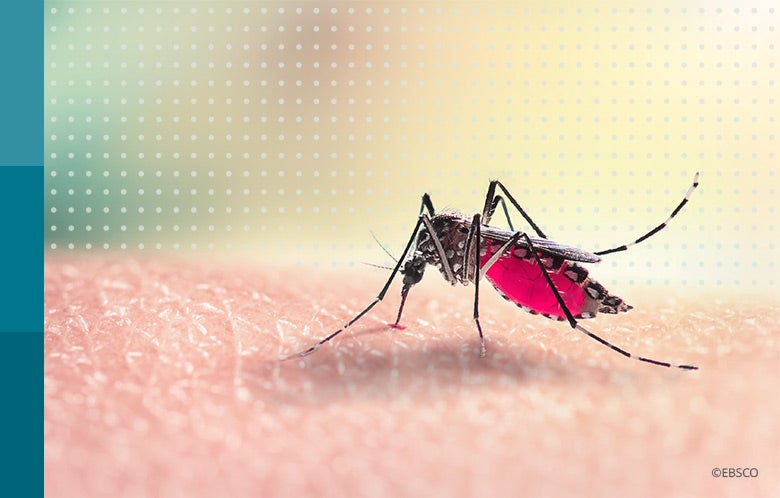Malaria is not new to the United States, with more than 2,000 cases diagnosed each year. However, until recently, these have been mostly travel-related, meaning that patients acquired the infection in an endemic region and were diagnosed after returning to the U.S. Rare cases of transmission through blood transfusion and in utero have also been reported. There hasn’t been a single documented case of locally acquired, mosquito-transmitted malaria in the United States since 2003 – that is, until now.
Malaria is caused by the parasite Plasmodium and spread by Anopheles mosquitos. Of the five species that can infect humans, P. falciparum is the most common. Transmission occurs through the bite of an infected female mosquito, allowing the parasite to travel to the liver to reproduce and develop, causing flu-like illness with fever, vomiting, headache, cough, chills, and body aches. If the infected patient is bitten by another Anopheles mosquito, subsequent transmission cycles can occur if that mosquito proceeds to bite other humans.
Globally, there were nearly 250 million cases of malaria in 2021, the most recent year for which complete data is available. Most cases were reported in sub-Saharan Africa. The geographic burden of malaria is influenced by the tropical and subtropical habitat in which the Anopheles mosquito vector resides, which is expanding due to climate change. The risk of sustained malaria transmission is higher in regions where Anopheles mosquitoes can survive longer season-to-season.
Nine cases of locally acquired malaria have been reported in the U.S., including seven cases in Florida, one in Texas, and one in Maryland. P. vivax was the parasite identified in Florida and Texas; however, P. falciparum was the causative agent in Maryland. The close geographic proximity of the cluster of cases in Sarasota County Florida suggests a common source, and mosquito surveillance and control measures were implemented in each of the affected areas.
Physicians in the U.S. might now consider malaria as a possible diagnosis in patients with flu-like illness even if they have not traveled recently to an endemic area.
Physicians in the U.S. might now consider malaria as a possible diagnosis in patients with flu-like illness even if they have not traveled recently to an endemic area.
These few cases of malaria do not currently pose a major threat to public health in the United States. However, physicians might now consider malaria as a possible diagnosis in patients with flu-like illness even if they have not traveled recently to an endemic area, particularly for patients with new anemia or thrombocytopenia.
For patients with suspected malaria, prompt parasitology testing is essential for diagnosis and selection of appropriate treatment that is based on the parasite species and its drug susceptibility. Rapid and effective treatment can prevent progression to severe disease as well as limit the risk of further transmission to local mosquitoes and, thus, to other people.
Mosquito avoidance is generally recommended at all mosquito-active times to prevent a variety of infections, including malaria. Educate your patients on how to reduce the risk of mosquito bites by:
- Using Environmental Protection Agency (EPA)-approved insect repellents on skin and clothing
- Wearing long-sleeved shirts and long pants while outdoors
- Limiting time outdoors at dawn, dusk, and early evening
- Taking steps to control mosquitos at home by
- Using intact screens on windows and doors
- Eliminating mosquito breeding sites (standing water)
While the small number of locally acquired cases of malaria do not pose an immediate threat to public health, the expanding habitats of mosquitoes driven by climate change may spread the distribution of mosquito-borne diseases to areas previously unaffected.



